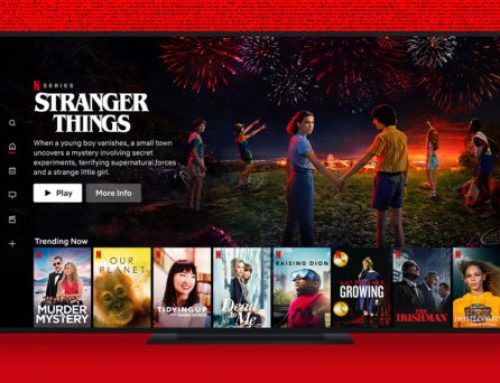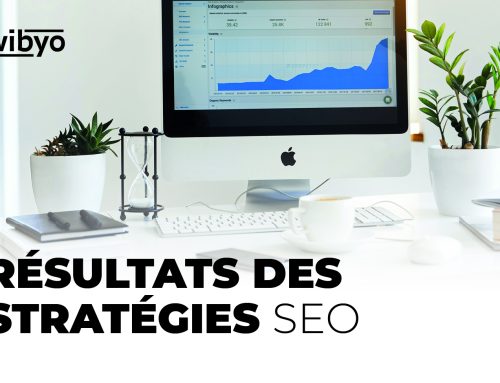Anyone who opens “Google Analytics” for the first time feels overwhelmed by the amount of data there. The digital age has not created the fear of “Big Data” for no reason, the amount of information collected on each Internet user is phenomenal. Our predecessors in the marketing and management world would probably have gone out of their way to have access to it. However, few professionals are able to use this tool optimally and efficiently. In web referencing, it is important to be able to navigate this mess of data to analyze the results generated by our strategies and translate them to our customers or our bosses. To achieve this, performance indicators, or KPIs, will be your best allies.
What is a KPI

KPI is the abbreviation of the English expression “Key performance Indicator” which can be translated as: Key performance indicator. We are therefore talking about quantitative data that reflects a targeted business objective. Indeed, it is by associating the right performance indicators, SEO or others, with the goals of a company that we manage to manage information well.
In this way, we can transform an improvement in the SEO of a website into quantifiable and marketable results for a business objective. KPIs are therefore tools that, in addition to helping SEO analysis, allow the SEO strategist to speak the same language as a manager.
KPIs can be quantified in several ways. They can be evaluated by volume by looking at the number of visitors to the site, the number of pages viewed, etc. They can also be measured in quality by evaluating the bounce rate and the average duration of a visit. It is also possible to assign a monetary value to an objective to know how much money a strategy could have generated. Finally, we can assess the cost of a strategy based on the number of purchases generated or leads created. However, to be able to use SEO performance indicators well, you have to understand them well and know how to categorize them according to the objectives to be achieved.
Business objectives and performance indicators

Before even developing an SEO strategy and analyzing a website, it is crucial to know the purpose of the company you are working for. Indeed, improving its position in the results page of a search engine is not a goal in itself, but a way to achieve the objective in question. It is therefore necessary to question the managers of the company to know their motivations behind their SEO approach. There are several categories of objectives and it is important to know how to differentiate them. To help you understand, we’ll take a look at three of the main lens categories.
1— Notoriety
Increasing the notoriety of a website is a classic marketing objective. The goal is to increase the visibility of a business to ensure that it is known by as many people as possible. To quote one of my university teachers: “You can be the most interesting guy in the world, the girl who doesn’t know you exist is unlikely to fall in love with you”. Indeed, no matter the quality of your product, if the consumer does not know it, you will not sell it.
An example of a relevant performance indicator for this type of goal is the number of impressions on Google. Instead of sticking to the positioning of each page on a specific keyword, this KPI indicates the number of times a website has appeared in the results pages of a search engine. This ensures that in addition to being well positioned, our subject is really sought after and our page is clearly visible.
2— The commitment
Increasing consumer engagement means increasing their interactions with a business. In other words, it’s involving a customer in the company so that they develop an attachment to the brand. An engaged customer will participate by liking and commenting on your photos published on social networks for example. He will talk about the brand and act as a brand ambassador. Ultimately, he will become a loyal customer who will make repeat purchases.
To measure engagement, we could look at comments posted on a social network page or on a company’s “Google My Business” listing. The more comments you have, the more engagement increases. The click-through rate is also an indicator that demonstrates customer engagement.
3— Conversion
Often times, conversion means purchasing the product. However, the conversion can be viewed much more broadly. For example, a business might aim to show a video to as many people as possible. In this case, a customer’s conversion could be listening to said video. A customer’s conversion is therefore when they take action and do what is expected of them.
As this parameter can be different depending on the sector, the indicators to measure it are also very diverse. For example, we can evaluate the number of calls received by the customer from a shortcut on his website, the number of times a customer has placed an item in his basket, the number of times a customer reaches the page information for an “X” event, and so on.
Associate a performance indicator with a business objective

In web referencing, each campaign is unique. To choose the right performance indicators, good communication between the manager and the strategist is extremely important. A good SEO specialist should always keep in mind that SEO performance indicators are not necessarily the ones that should be presented first to the customer. It is essential to align the data presented to the person in charge of the company with the business objectives targeted by the latter.
For example, if the primary goal is to increase sales, it might be interesting to know the conversion rate of visitors to a website, as well as the average income from a conversion. With this information, the SEO strategist will be able to assess the average dollar value of a visit to the site and thus present the benefits generated by the company’s SEO project.
Finally, the important thing is that all the players in the strategy speak the same language. This allows us to better communicate the benefits of the work done and the reasons why it is important to continue in this direction. Today, more than ever, web referencing must be seen as a long-term investment that could pay off a lot.




